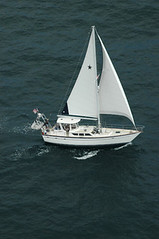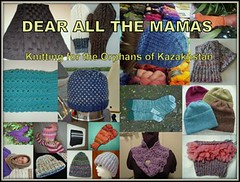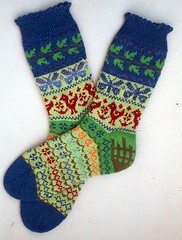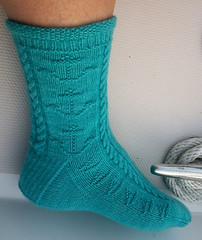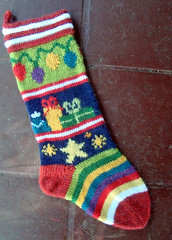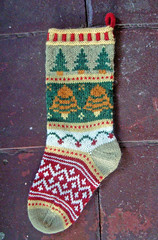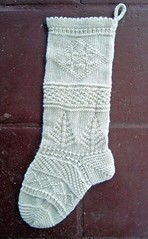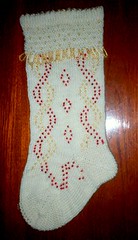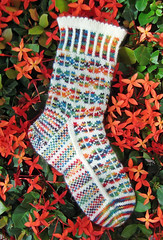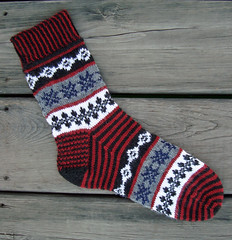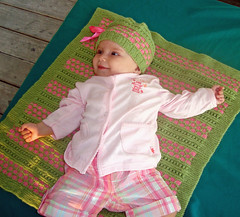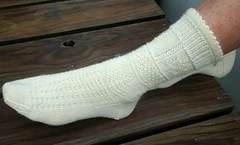
Wednesday, May 27, 2009
Kuna Yala
 The tiny islands (400 of them!) of the Kuna Yala nation are along the eastern side of Panama in the Caribbean Sea. Although they are part of the country of Panama, they are self-governed by the Kuna tribal people. Of all the places that we've visited these past three years, this is our number one favorite spot!
The tiny islands (400 of them!) of the Kuna Yala nation are along the eastern side of Panama in the Caribbean Sea. Although they are part of the country of Panama, they are self-governed by the Kuna tribal people. Of all the places that we've visited these past three years, this is our number one favorite spot!Warm, clear blue water, friendly local people, soft breezes, palm trees and white sand beaches. The coral reefs were so wild with sea life that we felt like we were in a slightly overdone theme park. Fresh fish were readily available and once a week a canoe would come by with fresh fruits, v
 egetables, eggs, and beer from the mainland.
egetables, eggs, and beer from the mainland.
The tiny island of Nuinudup, in the Eastern Lemon Cays was where we anchored for a couple of weeks. While Jonesy soaked in the sea and monitored the adventures of several 10” starfish, I took a stroll to the little palm shack seen in the background of the photo – clear over on the other side of the island. Yep, that’s how small the island is – about a football field size. And yes, one of those boats in the background is our Niki Wiki. The two boats look the same don't they? Well, they are sister ships - both Gulfstar Sailmaster 50 feet - and there were only a handful (14? 17?) ever produced. Tropical Dance is the other ship.

The resident ladies had strung up their molas and were patiently waiting to make a sale from the anchored sailboats. Molas are the reverse-applique panels which are hand-sewn, and embroidered by the Kuna women. They wear these panels as part of their traditional dress. Men wear t-shirts and shorts.
Nowadays, the Kuna women sell some of the molas to raise cash. The other cash crop is the coconuts from the islands. These they sell to Columbia to make copra - for cosmetics and industrial use.

Each morning, we would see two women paddle to the island in a dugout canoe. Throughout the day, as we sat in the cockpit of our boat reading or knitting, we would see them washing clothes in the fresh water wells, picking up coconuts, and sitting in the hammocks sewing on new molas. When dusk fell, they would paddle back over to another nearby island (Banedup).
The women speak only Kuna – no Spanish and no English, unlike the men who learn Spanish in school. But through hand gestures I indicated t
 hat I only had $3 with me, but that I was interested in their molas and photos. I offered my $3 for the privilege of taking photos which was quickly accepted. We understand that many of the Kuna people don’t like having their picture taken, but that a little cash sometimes provides access.
hat I only had $3 with me, but that I was interested in their molas and photos. I offered my $3 for the privilege of taking photos which was quickly accepted. We understand that many of the Kuna people don’t like having their picture taken, but that a little cash sometimes provides access.So here is one of the women in her full Kuna costume which she wears every day. The top is a blouse of very lightweight fabric which has the mola sewn ont
 o it around the waist. There are two mola panels used – one for the front and one for the back of the blouse. The skirt is simply a piece of printed fabric wrapped around and tucked in. Here is a closeup of her personal mola. This is a very traditional design – it has the maroon color
o it around the waist. There are two mola panels used – one for the front and one for the back of the blouse. The skirt is simply a piece of printed fabric wrapped around and tucked in. Here is a closeup of her personal mola. This is a very traditional design – it has the maroon color ed background and geometric striping of primary colors in many layers of fabric. All strips are hand-sewn in matching thread color and details are embroidered on in single ply threads.
ed background and geometric striping of primary colors in many layers of fabric. All strips are hand-sewn in matching thread color and details are embroidered on in single ply threads.This is a photo of some of the modern molas she also had for sale. These are not traditional molas and some purists won’t even call them “molas”. They are made only for the tourist trade. The designs are appliquéd versus the traditional reverse layering process, and use larger pieces of fabric.

Here is a closeup of the strings of beads that adorn the women’s legs and arms. They are strung so that they create geometric designs as they are wrapped up the legs and arms.
 So, the next day the ladies came to the boat in their dugout canoe to sell me some molas. In the Kuna households, it is the women who manage all the finances, and they are really good saleswomen!
So, the next day the ladies came to the boat in their dugout canoe to sell me some molas. In the Kuna households, it is the women who manage all the finances, and they are really good saleswomen!Because it was gently raining, I invited them onto the boat to look through their extensive stash of molas. We were able to enjoy looking at a full plastic pail (the usual luggage here in Kuna Yala) of molas. I picked out several that I liked (yes, I
 got a couple of small touristy ones because I liked them – and they make great gift items) and we paid – with US dollars as that is the currency here. Yes, it used to be coconuts, but that was many years ago.
got a couple of small touristy ones because I liked them – and they make great gift items) and we paid – with US dollars as that is the currency here. Yes, it used to be coconuts, but that was many years ago.Fortunately for us, and unfortunately for the Kuna economy, the prices of molas as dropped this past year or so. There are not as many tourists or cruisers coming through to buy molas. I cringe at the low pr
 ices because I know how many hours of work go into each piece. We make sure that we buy some from every location that we visited. We feel that it is a payment for the use of their beautiful islands and waters.
ices because I know how many hours of work go into each piece. We make sure that we buy some from every location that we visited. We feel that it is a payment for the use of their beautiful islands and waters.I'll get photos of my collection and post them later. I did manage to buy one each from two different "Master Mola Makers". The quality is magnificent in these two pieces and I cherish them. I also have a small set of the beads for a bracelet.
In a few months, we'll be heading back out to these beautiful islands. There is a community of cruisers who live full time out there and we made many friends.
Next blog: Knitting accomplishments...
Comments:
<< Home
Fascinating! Do they attach the beads to their legs daily or is that something that's 'sewn' into place.
So glad to hear from you. How interesting to hear of another adventure of yours. Everything is so beautiful.
The molas are beautiful. I'm glad you were able to make a collection and contribute to the Kuna economy.
I admire your mola shopping ethics.
I have a small mola purse my dear mother-in-law bought when they toured Panama. It is of a cat, in reverse applique. You have brought lovely memories to mind. Thanks!
I have a small mola purse my dear mother-in-law bought when they toured Panama. It is of a cat, in reverse applique. You have brought lovely memories to mind. Thanks!
As always, your blog is not only interesting, but informative.
I really enjoyed reading about the molas as I have several picked up by my son when he sailed through that same area as you ago.
I haven't done anything with them as yet. A friend stuffed hers, and made it into a small pillow. What do you plan to do with yours?
chloe
Post a Comment
I really enjoyed reading about the molas as I have several picked up by my son when he sailed through that same area as you ago.
I haven't done anything with them as yet. A friend stuffed hers, and made it into a small pillow. What do you plan to do with yours?
chloe
<< Home


